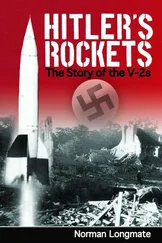Mike Mullane - Riding Rockets
Здесь есть возможность читать онлайн «Mike Mullane - Riding Rockets» весь текст электронной книги совершенно бесплатно (целиком полную версию без сокращений). В некоторых случаях можно слушать аудио, скачать через торрент в формате fb2 и присутствует краткое содержание. Жанр: Старинная литература, на английском языке. Описание произведения, (предисловие) а так же отзывы посетителей доступны на портале библиотеки ЛибКат.
- Название:Riding Rockets
- Автор:
- Жанр:
- Год:неизвестен
- ISBN:нет данных
- Рейтинг книги:3 / 5. Голосов: 2
-
Избранное:Добавить в избранное
- Отзывы:
-
Ваша оценка:
- 60
- 1
- 2
- 3
- 4
- 5
Riding Rockets: краткое содержание, описание и аннотация
Предлагаем к чтению аннотацию, описание, краткое содержание или предисловие (зависит от того, что написал сам автор книги «Riding Rockets»). Если вы не нашли необходимую информацию о книге — напишите в комментариях, мы постараемся отыскать её.
Riding Rockets — читать онлайн бесплатно полную книгу (весь текст) целиком
Ниже представлен текст книги, разбитый по страницам. Система сохранения места последней прочитанной страницы, позволяет с удобством читать онлайн бесплатно книгу «Riding Rockets», без необходимости каждый раз заново искать на чём Вы остановились. Поставьте закладку, и сможете в любой момент перейти на страницу, на которой закончили чтение.
Интервал:
Закладка:
MMU—Manned Maneuvering Unit. A space jet pack. An MMU has high-pressure gas thruster jets that allow an untethered astronaut to fly short distances from the space shuttle.
MS—Mission Specialist. Astronauts trained for mission payload activities, e.g., using the robot arm, doing a spacewalk, conducting experiments, etc.
MSE—Military Space Engineer. Department of Defense personnel flown on some DOD missions.
MSFC—Marshall Spaceflight Center in Huntsville, Alabama.
NASA—National Aeronautics and Space Administration.
O 2 —Gaseous oxygen breathed by astronauts.
OFT—Orbital Flight Test. The first four space shuttle flights. After these were successfully concluded, the STS was proclaimed operational .
OMS—Orbital Maneuvering System. Two six-thousand-pound-thrust liquid-fueled engines at the tail of the orbiter. These are used for the final boost into orbit, the brake from orbit, and for large orbit changes.
PAM—Propulsion Assist Module. A solid-fueled rocket motor attached to the bottom of a communication satellite to lift it to a 22,300-mile-high equatorial orbit.
PAO—Public Affairs Officer. An MCC position filled by NASA’s representative to the public.
PEAP—Personal Emergency Air Pack. A portable container of breathing air, which astronauts would use in a ground escape through toxic fumes.
PLBD—Payload Bay Doors. The clamshell doors that cover the space shuttle payload bay.
PLT—Pilot. The pilot astronaut who sits in the right front seat during a shuttle launch and landing. Like the mission commander, the PLT is trained to fly the shuttle.
PPK—Personal Preference Kit. The twenty items of personal significance that NASA permits astronauts to fly in space.
PR—Public Relations. Refers to all things associated with NASA’s interface with the public.
PROP—Propulsion. An MCC controller who monitors the shuttle RCS and OMS propulsion systems.
PS—Payload Specialist. A “part-time” astronaut trained for a specific experiment. PSes are not career NASA astronauts and receive only safety and habitability training on the shuttle.
RCS—Reaction Control System. A system of forty-four small rocket motors on the tail and nose of the orbiter that control the vehicle’s attitude and are also used in small orbit changes, e.g., during the final stages of a rendezvous or separation from a deployed satellite.
RHC—Rotational Hand Controller. The “stick” used to rotate the tip of the robot arm about a point. The CDR’s and PLT’s control sticks, used to maneuver the orbiter, are also referred to as RHCs.
RMS—Remote Manipulator System. The Canadian-built robot arm operated from the rear cockpit of the orbiter. It is used to capture and release satellites, maneuver spacewalking astronauts and cargo, and for vehicle inspections (through its end-mounted TV camera).
RSLS—Redundant Set Launch Sequencer. The software module in the shuttle’s computers that controls the final thirty-one seconds of a shuttle countdown.
RSO—Range Safety Officer. A USAF officer who monitors a shuttle launch and is prepared to blow up the vehicle if it goes out of control and threatens a civilian population center.
RSS—Range Safety System. The explosives aboard the solid rocket boosters and the external gas tank and the supporting electronic equipment that would be used to blow up an out-of-control space shuttle.
RTLS—Return to Launch Site Abort. A launch abort in which the space shuttle returns to land at the Kennedy Space Center.
SAIL—Shuttle Avionics Integration Laboratory. An electronic lab in which shuttle software can be evaluated. SAIL has a replica of the shuttle cockpit.
SAS—Space Adaptation Syndrome. Space sickness.
SEAL—Sea, Air, Land. An acronym for an elite navy force that is trained for special covert operations against the enemy.
Sim Sup—Simulator Supervisor. The team leader who prepares scripts of malfunctions to train astronauts and MCC controllers. The Sim Sup’s team inputs malfunctions and evaluates the response of astronauts and the MCC to simulated emergencies.
SLF—Shuttle Landing Facility. The 15,000-foot-long runway at Kennedy Space Center used by landing shuttles.
SMS—Shuttle Mission Simulator. The primary simulators at Johnson Space Center for training astronauts to operate the shuttle systems and respond to emergencies.
SRB—Solid Rocket Booster. Twin boosters attached to the sides of the external gas tank. The term “solid” in the title refers to the propellant, which has the consistency of hard rubber.
SSME—Space Shuttle Main Engine. A liquid-fueled engine at the back of the orbiter that burns the liquid oxygen and liquid hydrogen carried in the external gas tank. There are three SSMEs at the tail of the orbiter.
STA—Shuttle Training Aircraft. A Gulfstream business jet modified to have the landing characteristics of a shuttle. Pilot astronauts (CDRs and PLTs) train for shuttle landings in the STA.
STS—Space Transportation System. A fancy name for what the public would call the space shuttle. The STS is made up of the winged vehicle (the orbiter), the solid-fueled rocket boosters, and the external gas tank.
TAL—Trans-Atlantic Landing abort. A launch abort in which the shuttle makes an emergency landing at an airport in Europe or Africa.
TDRS—Tracking and Data Relay Satellite. A satellite used by NASA to relay commands, data, and astronaut voice communication between the orbiter and MCC.
TFNG—Thirty-Five New Guys. The nickname adopted by the astronaut class of 1978. The name is a play on an obscene military acronym FNG (F***ing New Guy), used to describe someone new to a military unit.
THC—Translational Hand Controller. A square-shaped controller that can be moved in or out, up or down, and left or right. These control inputs will produce the corresponding movement at the tip of the robot arm. The CDR and PLT also have THCs that will fire the orbiter’s thrusters to move it in the direction commanded.
UCD—Urine Collection Device. A condom/nylon bladder arrangement or an adult diaper worn by astronauts on the three occasions when they cannot use the shuttle toilet: launch, spacewalks, and reentry/landing.
UHF—Ultra-High Frequency. A radio frequency.
USAF—United States Air Force.
USMC—United States Marine Corps.
USN—United States Navy.
VAB—Vertical Assembly Building. The 500-foot-high building originally used to prepare the Saturn V moon rockets. The shuttle stack is completed in the VAB before being transported to the launchpad.
VFR—Visual Flight Rules. An aviation term referring to flights where the pilot is responsible for his/her own clearance from other aircraft and objects.
VITT—Vehicle Integration Test Team. The team at Kennedy Space Center that supports the checkout of the orbiters as they are prepared for a mission.
WETF—Weightless Environment Training Facility. A large swimming pool used by astronauts to train for spacewalks.
Читать дальшеИнтервал:
Закладка:
Похожие книги на «Riding Rockets»
Представляем Вашему вниманию похожие книги на «Riding Rockets» списком для выбора. Мы отобрали схожую по названию и смыслу литературу в надежде предоставить читателям больше вариантов отыскать новые, интересные, ещё непрочитанные произведения.
Обсуждение, отзывы о книге «Riding Rockets» и просто собственные мнения читателей. Оставьте ваши комментарии, напишите, что Вы думаете о произведении, его смысле или главных героях. Укажите что конкретно понравилось, а что нет, и почему Вы так считаете.












